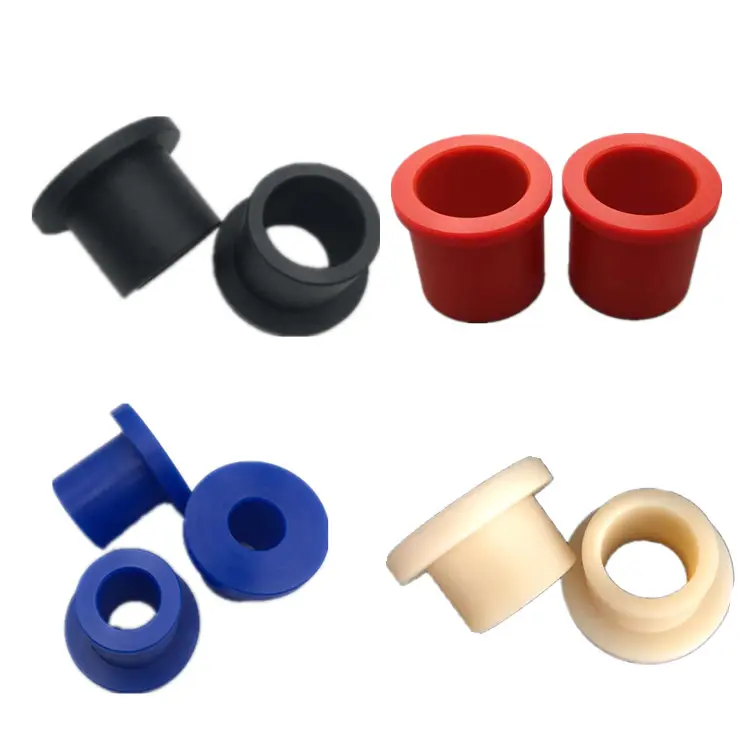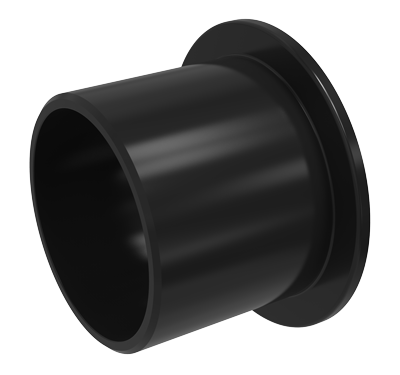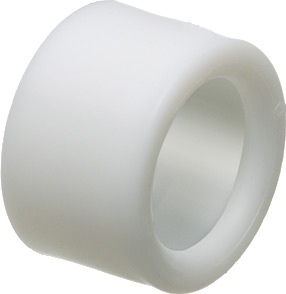
Can I find information on alternatives to nylon bushings for specific industrial applications?
Yes, you can find information on alternatives to nylon bushings for specific industrial applications by considering the following sources:
1. Manufacturer Websites:
– Visit the websites of manufacturers that specialize in industrial components or bushings. They often provide detailed information about their product offerings, including alternative materials to nylon bushings.
– Look for sections on their websites that discuss different materials, specifications, and applications. These sections may highlight alternative materials such as metal, plastic, composite, or other types of bushings suitable for specific industrial applications.
2. Industry Publications and Journals:
– Industry publications and journals dedicated to specific industrial sectors often feature articles or studies that discuss different types of bushings and their applications.
– Explore relevant publications in your industry to find articles, case studies, or technical papers that discuss alternative bushing materials. These resources can provide insights into the performance, benefits, and limitations of different materials in specific industrial applications.
3. Consult with Industry Experts:
– Reach out to industry experts, engineers, or consultants who specialize in the specific industrial application you are interested in. They can provide valuable insights and recommendations based on their expertise and experience.
– Attend industry conferences, trade shows, or seminars where you can network with professionals and experts in the field. Engaging in discussions and seeking advice from knowledgeable individuals can help you discover alternative bushing materials suitable for your specific application.
4. Online Forums and Communities:
– Participate in online forums, communities, or discussion groups related to your industry or specific industrial applications. These platforms provide opportunities to connect with professionals, share experiences, and seek recommendations on alternative bushing materials.
– Post inquiries or questions about alternative bushing materials, specifying your industrial application and requirements. Members of the community may share their insights, experiences, or suggestions based on their own knowledge and expertise.
5. Consult with Suppliers and Distributors:
– Contact suppliers and distributors of industrial components, including bushings, and inquire about alternative materials suitable for your specific application.
– Suppliers and distributors often have extensive product knowledge and can provide guidance on alternative bushing materials based on your requirements, such as load capacity, operating conditions, or environmental factors.
– Inquire about materials such as bronze, stainless steel, PTFE (polytetrafluoroethylene), composite materials, or other plastics that may be suitable alternatives to nylon bushings.
When researching alternatives to nylon bushings for specific industrial applications, consider factors such as material properties, compatibility with the application, load capacity, temperature resistance, lubrication requirements, and overall performance.
By exploring these sources and consulting with experts, you can gather valuable information and make informed decisions about the most suitable alternative bushing materials for your specific industrial application.

What are the temperature and pressure limits of nylon bushings, and how do they impact their performance?
If you are interested in understanding the temperature and pressure limits of nylon bushings and their impact on performance, here’s a detailed explanation:
Temperature Limits:
– Nylon bushings have specific temperature limits that define their operating range. These limits are influenced by the thermal properties of nylon and its ability to withstand heat without significant degradation.
– The exact temperature limits can vary depending on the specific type and formulation of nylon used in the bushings. However, as a general guideline, nylon bushings typically have a temperature range of approximately -40°C to 120°C (-40°F to 248°F) for continuous operation.
– At temperatures beyond the upper limit, nylon bushings can experience softening, dimensional changes, reduced mechanical strength, and loss of self-lubricating properties. These effects can result in increased wear, increased friction, and potential failure of the bushings.
– Similarly, at temperatures below the lower limit, nylon bushings can become brittle and lose their flexibility, leading to reduced performance and potential cracking or fracturing.
Pressure Limits:
– The pressure limits of nylon bushings refer to their ability to withstand compressive forces without deformation or failure. Pressure limits are influenced by factors such as the material strength, design, and dimensions of the bushings.
– Nylon bushings, being a relatively softer material compared to metals, have lower pressure limits compared to materials like bronze or steel. However, they can still handle moderate to high loads in many applications.
– The pressure limits of nylon bushings can vary depending on factors such as the specific grade of nylon, the bushing design (e.g., wall thickness), and the specific application conditions.
– As a general guideline, nylon bushings can typically handle pressures in the range of 15 MPa to 35 MPa (2,175 psi to 5,075 psi) for static loads, and lower pressures for dynamic or oscillating loads.
Impact on Performance:
– Exceeding the temperature or pressure limits of nylon bushings can have significant impacts on their performance and longevity.
– When operating beyond the temperature limits, nylon bushings may experience increased friction, accelerated wear, and reduced load-carrying capacity. The bushings may lose their self-lubricating properties, leading to higher levels of heat generation and potential damage to the mating surfaces.
– Operating beyond the pressure limits can cause deformation, excessive wear, or even failure of the nylon bushings. The bushings may experience plastic deformation, leading to dimensional changes and compromised fit. Higher pressures can also lead to increased friction and heat, further affecting the performance and wear characteristics.
– It is crucial to consider the temperature and pressure limits of nylon bushings in the context of the specific application requirements. Factors such as the anticipated operating conditions, loads, speeds, and environmental factors should be taken into account when selecting and implementing nylon bushings.
– If the application involves extreme temperatures or high-pressure conditions that exceed the limits of nylon bushings, alternative materials or specialized bushing designs may be more suitable.
– It is recommended to consult the manufacturer’s documentation, engineering references, or seek guidance from experts to determine the appropriate temperature and pressure limits for specific nylon bushings and their impact on performance.
By understanding the temperature and pressure limits of nylon bushings and their impact on performance, you can make informed decisions when selecting and implementing these bushings in various applications.

Are there different types of nylon materials used in manufacturing nylon bushings, and how do they impact performance?
Yes, there are different types of nylon materials used in manufacturing nylon bushings, and they can have varying impacts on performance. Here’s a detailed explanation:
1. Nylon 6:
– Nylon 6, also known as polyamide 6 (PA6), is a common type of nylon material used in manufacturing bushings. It offers good mechanical strength, toughness, and wear resistance.
– Nylon 6 bushings provide reliable performance in various applications, particularly those with moderate loads and operating conditions. They are cost-effective and widely available.
2. Nylon 66:
– Nylon 66, or polyamide 66 (PA66), is another popular nylon material used for bushing manufacturing. It has similar properties to Nylon 6 but with enhanced strength, stiffness, and heat resistance.
– Nylon 66 bushings exhibit improved dimensional stability and resistance to deformation under load, making them suitable for applications with higher loads or more demanding operating conditions.
3. Heat-Stabilized Nylon:
– Heat-stabilized nylon materials, such as Nylon 6/6 or PA66 with added heat stabilizers, are specifically formulated to provide increased resistance to elevated temperatures.
– These heat-stabilized nylon bushings can withstand higher temperature ranges without significant loss of mechanical properties or dimensional stability. They are suitable for applications where thermal resistance is a critical requirement.
4. Glass-Filled Nylon:
– Glass-filled nylon, also referred to as reinforced nylon, is a type of nylon material that is reinforced with glass fibers. The addition of glass fibers improves the strength, stiffness, and dimensional stability of the nylon.
– Glass-filled nylon bushings offer enhanced load-bearing capabilities, improved wear resistance, and reduced creep under heavy loads. They are commonly used in applications that require higher strength and rigidity.
5. Molybdenum Disulfide (MoS2) Filled Nylon:
– MoS2 is a solid lubricant that can be added to nylon materials to enhance their self-lubricating properties. Nylon bushings with MoS2 fillers provide improved friction and wear characteristics.
– MoS2-filled nylon bushings are suitable for applications where additional lubrication may be limited or impractical. They help reduce friction, minimize wear, and extend the lifespan of the bushing and mating parts.
6. Other Specialty Nylon Materials:
– There are various other specialty nylon materials available for specific applications. For example, nylon materials with enhanced chemical resistance, electrical conductivity, or low friction properties can be used in specialized bushing applications.
– These specialty nylon bushings cater to specific performance requirements and can be selected based on the unique needs of the application.
The choice of nylon material for manufacturing bushings depends on the specific application requirements, including load capacity, operating temperature, wear resistance, dimensional stability, and cost considerations. It is important to select the appropriate nylon material that can meet the performance demands of the application and ensure optimal functionality and durability of the bushings.


editor by CX 2024-04-13